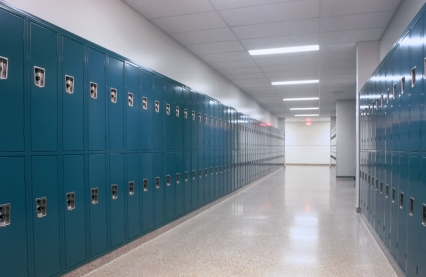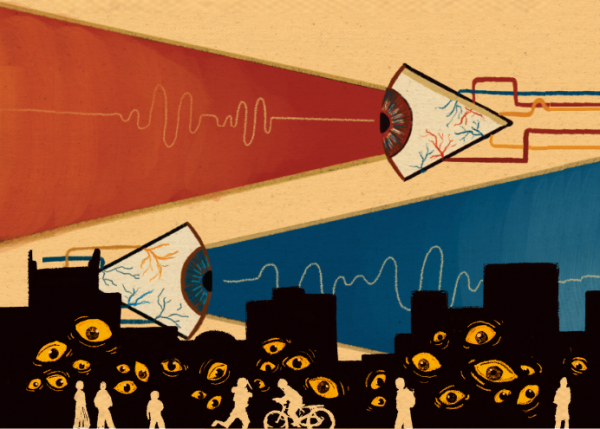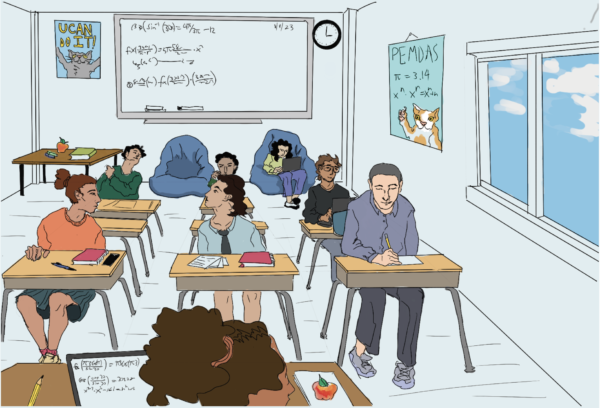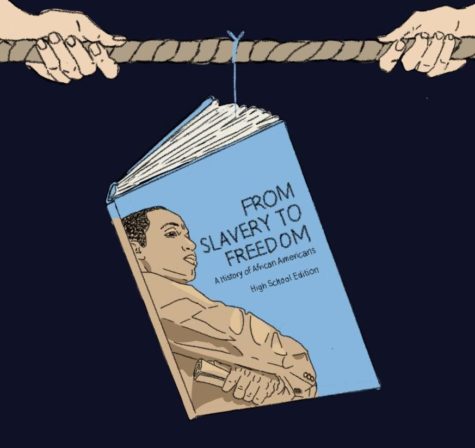What is the most effective solution to prevent school shootings?

Photo courtesy of schoolockers.com
March 23, 2018
Gigi Wade: Federal bans are the only appropriate answer to mass shootings
12.
According to CNN, that’s the number of school shootings that have happened just nine weeks into 2018. Most recently, the Feb. 14 shooting at Marjory Stoneman Douglas High School left 17 dead and generated a needed surge in momentum for stricter gun control.
Now, the same question is being asked on both sides of the aisle: what’s next? The NRA and Republican politicians were quick to respond with proposals for legislation to double down on school security, which conveniently denies the fact that guns are the problem. According to the American Journal of Public Health, a 1 percent increase in gun ownership correlates with a roughly 0.9 percent rise in the firearm homicide rate at the state level, indicating that more guns means more death.
There are a myriad of issues with the Republican plan, whether it be accomplished by giving staff weapons, or by installing metal detectors at entrances. First, it hasn’t worked in the past: Parkland, Sandy Hook and Columbine all unfolded while armed guards stood in the vicinity. Second and most importantly, stricter security measures endanger students of color who are already more likely to face disproportionately harsh levels of scrutiny.
Historically, according to the New York Times, zero-tolerance policies have been used to target students of color. Increasing the number of guns in circulation in schools provides yet another avenue for this violence to continue. Imposing more general safety measures is not any better, as doing so threatens to turn schools into hostile police states. The better solution is comprehensive, rather than targeted, preventative action, such as a federal ban on semiautomatic rifles (under the umbrella term of assault weapons) and bump stocks.
According to a two-year long, nonpartisan study conducted by the RAND Corporation, passing an assault weapons ban might prevent 170 mass shooting deaths a year in the US, the rationale being that assault weapons are often used to kill on large scale. Precedence stands behind the success of this legislation: in Australia, a ban was put into effect in 1996 after a horrific massacre. Since 1996, there have been zero mass shootings in Australia.
Our Republican politicians often slight calls for bans on weapons, contending that they are not exhaustive and leave room for loopholes. Rather, the politicians would prefer to advance proposals that make guns more readily available because they are resolutely tethered to the Second Amendment. The correct approach is one that stems from numbers and empirical evidence; federal bans on certain types of guns are the only way to disrupt the appalling murder culture that is so unique to our country.
Jacob Dalton: Arming teachers is the preventative measure needed to stop school shootings
In the wake of the horrific slaughters in Florida and Kentucky, it is the duty of the staff and students in each school across the country to defend and to protect their own school, especially in such a diverse and accepting school as ETHS.
As the aftermath continues and the waves of political actions reach out to all corners of the US and in some parts of the world, one popular idea has come to fruition: an outright ban of assault weapons such as AR-15s, AK-47s, SCRs and hundreds of other forms of modern sporting rifles.
On the traditionally Republican side, you have a push to arm staff members in the school. In the context of ETHS, that would mean arming the safety staff and training them for domestic terror attacks like in Florida. At Jackson High, a school in Mississippi, a mass shooting was prevented by an armed staff member with a handgun who detained the shooter. The shooter was armed with a 30-30 deer rifle.
After the Sandy Hook massacre, a group called “Faster Saves Lives” came to the forefront. This group trains staff members in 12 states. The idea behind F.S.L. is that schools are “soft targets”, meaning they are easy to attack and cause mayhem. By arming staff members and administrators, schools become “hard targets”, according to F.S.L.’s website. Instead of carrying a flashlight and whistle, we should arm staff members with precision handguns and a panic room with body armor and long rifles. This should all be kept under lock and key by our dean of safety or the school resource officers, of course.
What it all comes down to is this: criminals don’t follow the law. If you outlaw weapons and completely leave our schools defenseless, our students are sitting ducks waiting for a tragedy to happen. An assault weapons ban will only take long rifles from law abiding citizens, not the criminals and maniacs that commit mass shootings.
In a Utah school earlier this month, a student attempted to detonate a homemade bomb that he had hidden in his backpack, according to Associated Press. He had no rifles nor handguns on him; it was an act of terrorism all the same. Even if an assault weapons ban was passed, it would be nearly impossible to enforce. It would take a door to door search of every neighborhood in every county of every state in the United States.
According to a 2009 National Institute of Justice report, approximately 300 million firearms are available to American civilians. Instead of limiting the rifles that people can legally own, make it easier for people to own and carry firearms so that we are more likely to carry and to get the training for precision shooting.


















